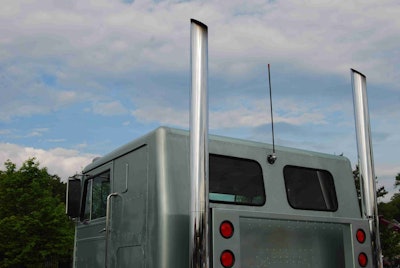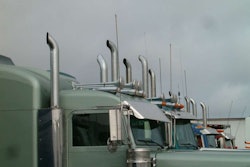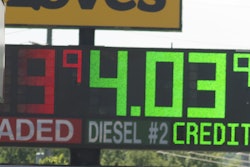
Numerous trucking organizations, manufacturers and stakeholders submitted comments on the next round of fuel economy and emissions regulations for the trucking industry, proposed by the EPA this summer.
The so-called Phase 2 of the Greenhouse Gas Emissions Standards and Fuel Efficiency Standards for Medium- and Heavy-Duty Engines and Vehicles yielded hundreds of thousands of comments, with trucking industry stakeholders mostly saying they agree with the purpose of the regs — cleaner air — but see flaws in the EPA’s massive rule.
Some say the proposed rules are too aggressive and will be difficult to meet with the given timeline. Others say the market will drive the industry to meeting these proposed regulations during a similar timeline if it saves truck drivers and trucking companies money as the EPA says it will.
The proposed standards would begin in model year 2018 for trailers and 2021 for tractors and culminate in vehicle-wide — engine, truck and trailer — standards for model year 2027 vehicles.
OOIDA and ATA submitted comments during the comment period, summaries of which can be seen below. To see comments from trailer manufacturers, engine manufacturers and more, visit Overdrive‘s sister site CCJ for a full roundup of comments.

Owner-Operator Independent Drivers Association: OODIA said it’s concerned that the EPA and NHTSA “have not accurately estimated the costs and benefits of the proposed rule, nor have they adequately considered the excessive burden that will be placed upon small business owners and professional truck drivers from exorbitantly expensive, untested, and in some cases unproven technologies.”
OOIDA said it believes the market should drive fuel-efficient technologies “instead of expensive mandates.”
The association also said “fuel economy” is not an accurate measuring stick with heavy-duty vehicles because so many factors influence a truck’s fuel economy, such as freight hauled, route, traffic, speed limits, driver skill and more. OOIDA said if there was an affordable and reliable technology that would improve fuel efficiency by 24 percent over the 2017 baseline, a mandate wouldn’t be necessary because truck drivers would be “more than willing to purchase such equipment.”
OOIDA added that, while the proposed rule doesn’t mandate any specific technologies, the performance standards that will have to be met “require the adoption of unproven and unreliable technologies.”
When looking at the EPA and NHTSA’s estimated cost increase of $10,000 to $13,000 for new trucks and $1,400 for new trailers by the end of Phase 2, OOIDA said it believes these estimates are well below the actual costs of the proposed technologies.
American Trucking Associations: ATA said the market penetration rates estimated in the proposed rule are “overly aggressive,” and that OEMs “will be facing an uphill battle from the start in meeting their targets.”
ATA also said it believes the EPA and NHTSA underestimated the costs of technologies, “making the payback period on these technologies much longer than is stated in the proposed rule.”











